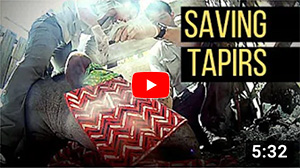The deforestation sweeping across the Brazilian Amazon is driven largely by industrial agriculture, mining and cattle ranching. But those activities wouldn’t be possible without heavy machinery like bulldozers and tractors, and the big banks that often finance their purchase.
Questionable business practices, weak government oversight and a lack of transparency make buying heavy machinery in the Amazon extraordinarily easy, according to a new report from investigative journalism outlet Repórter Brasil. In a recent investigation, it found that the heavy machinery market continues to go mostly overlooked in the fight to save the world’s largest rainforest.
“When you see photos of deforestation, those big areas were opened up by machines,” report co-author Naira Hofmeister told Mongabay. “It’s an under-covered issue, and we felt that we should investigate starting from the machines themselves.”
Last year, nearly 30,000 motor graders, road rollers, backhoe loaders, wheel loaders and other types of construction equipment were sold in Brazil by some of the world’s most leading manufacturers, including Caterpillar, Komatsu, John Deere, Hitachi and Sandvik, among others. In the agricultural sector, there was a 40% increase in sales from the previous year.
In general, the use of machines of all sizes and types has been on the rise in the Brazilian Amazon over the past decade, often in protected areas and Indigenous territories, the report said.
“These are machines that are able to dig very quickly and cover a large area,” Hofmeister said. “And in some cases, they’ve been bought without all the controls and regulations that we need.”
Repórter Brasil’s investigation found that heavy machinery is present at most steps of the process of nearly every activity driving deforestation. For agriculture, bulldozers are needed to clear the land. Tractors help plant seeds, drones spray pesticides, and automated harvesters collect the crops.
In mining, bulldozers clear the forest to create access roads, which makes it easier to bring in tractors, hydraulic excavators and wheel loaders for moving large quantities of soil around the mine site. Rafts and dredges are also used for excavation.
Because each of these machines can cost hundreds of thousands of dollars, buyers often have to open up lines of credits either with commercial banks or banks run by the manufacturer, such as John Deere Bank. Each bank’s due diligence requirements mean that before the credit line can be approved, the buyer has to demonstrate that the machine won’t be used for activities that contribute to illegal deforestation.
However, most banks have little or no way to confirm whether that rule is actually being upheld. “There is no evidence that the banks involved adopt effective measures to curb relatively simple schemes to circumvent environmental rules,” the report says.
For example, the report describes a farmer named Paulo Vieira Gonçalves who took out a $570,000 loan for agricultural machinery with the Brazilian Development Bank (BNDES) and Spain-based lender Santander in 2017. Since then, authorities have issued several interdictions and fines against his property in response to alleged deforestation that could have been investigated before the loan was granted.
Santander, DLL and John Deere Bank told Repórter Brasil they comply with all Central Bank sustainability regulations.
Many of the machinery manufacturers tied to deforestation say it’s the buyer’s responsibility to use their product legally and responsibly — something often mentioned in the clauses of their purchasing agreements. They also told Repórter Brasil that monitoring machine use for the entire life span of the product is nearly impossible, in part because the buyer has certain rights to privacy.
The report suggests employing technology that shares the location of machinery in real time, which can then be cross-referenced with the coordinates of protected areas. Some companies can already track the location of their machines, but only if the buyer decides to keep the tracking technology activated, they told Repórter Brasil.
“Those technologies do exist, but we need better coordination of political power to use them in a more widespread fashion and then generate the mechanisms for law enforcement to actually track, monitor and investigate,” Adriana Abdenur of Plataforma CIPÓ, a climate, governance and peace-building think tank in Brazil, told Mongabay.
In addition to implementing these technologies, the report says banks should improve due diligence measures for potential borrowers, including reviewing satellite images to check for deforestation, interviewing or visiting residents surrounding the property in question, and checking public lists for a history of fines and interdictions.
People should also be held accountable for providing false information during the due diligence measures that do exist. Right now, the report says, there is little or no penalty for that.
Banner image: Mining equipment on Tenharim Indigenous territory in Igarapé Preto, Amazonas. Photo courtesy of Ibamagov/Flickr.
FEEDBACK: Use this form to send a message to the author of this post. If you want to post a public comment, you can do that at the bottom of the page.

View targeted feeds![]() Twitter
Twitter![]() Instagram
Instagram![]() LinkedIn
LinkedIn![]() YouTube
YouTube
![]() RSS / XML
RSS / XML![]() Android mobile app
Android mobile app![]() Apple News
Apple News![]()
Mongabay is a U.S.-based non-profit conservation and environmental science news platform. Our EIN or tax ID is 45-3714703.![]()
© 2022 Copyright Conservation news
you're currently offline